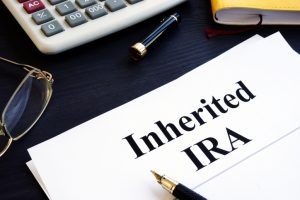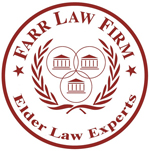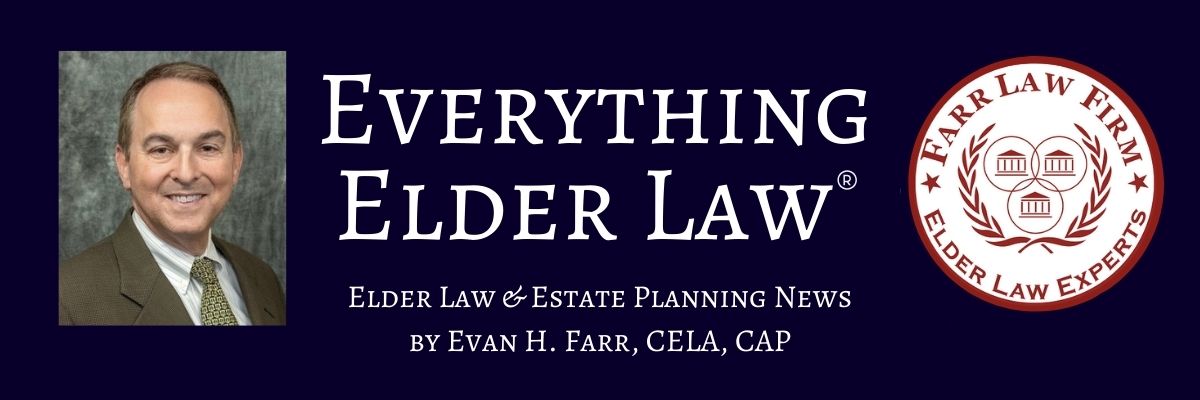
Marty’s brother, Ed, passed away suddenly. He never got married or had children, so he passed everything, including his Individual Retirement Account (IRA), to Marty. During one of the most difficult times in his life, while grieving for his deceased brother, Marty had no idea about everything involved when it came to inheriting his brother’s IRA.
Losing a loved one can bring not only emotional pain, grief, and sadness, but also significant financial responsibilities related to settling an estate that can cause much confusion. So, what responsibilities do you have with regard to the newly inherited account? The answer depends on your relationship to the deceased. Here I will discuss several factors that will determine what you can do with inherited retirement assets if the deceased is not your spouse. For more details on IRAs if the deceased is your spouse, please see IRS publication 590-B.
Rules for Non-Spouse Beneficiaries of Inherited IRA Accounts
A beneficiary that is not the spouse of the deceased – i.e., siblings, children, close friends – may not treat the account as if it is their own. They also cannot roll over the account into their own IRA. Here’s what they should do:
- Remember the First Required Minimum Distribution (RMD): For non-spouses, the first step is always to fulfill any RMD owed by the deceased in the year of death. If the deceased owner of the IRA account has already been taking retirement account distributions, they must continue that distribution schedule until the end of the calendar year. For instance, in our example, if Marty’s brother, Ed, was taking required distributions, Marty would have to make sure to take Ed’s final distribution in the year of his death, otherwise there is a 50% penalty on the amount he was supposed to take.
- Open an “inherited IRA” account:As the name implies, inherited IRAs are created specifically for accounts that someone else leaves you. The account remains in the name of the deceased, and you are the beneficiary.
- Starting in 2020 under the SECURE Act, for most beneficiaries, these accounts must be completely distributed by the end of the 10th year following the account owner’s death..
- The IRS’ 10-year inherited IRA clock starts in the year after the owner dies. That essentially means you have 11 years to drain the account.
- During the 10-year period, you are required to take annual RMDs. When the SECURE Act was originally passed, it seemed that RMDs were not required, but the IRS has since stated that they are required — see IRS Publication 590-B, pages 11 and 12, which provides an explanation and an example showing that beneficiaries ate subject to RMDs each year (as under the pre-SECURE Act rules) for years one through nine, and then the balance must be withdrawn in year 10. However, many commentators believe that this IRS publication and example may be in error, and it is still possible that the IRS may issue regulations changing this RMD requirement.
- If the inherited IRA is a Roth IRA, and you are a non-spouse beneficiary, you become subject to the same Required Minimum Distributions (RMDs) rules as with traditional IRAs.
- Required minimum distribution must begin by December 31st of the year following the original account owner’s passing.
- Inherited Roth IRA distributions are not taxable;however, inherited Ttraditional IRAs are of course taxable as they are taking out over the 10 year payout period.
Another option is:
- Withdrawing the money: The lump-sum distribution is always an option for non-spouse beneficiaries, regardless of Roth vs. Traditional or the age of the deceased.
- If you take a lump-sum distribution, you won’t be subject to the additional 10% federal tax on early withdrawals, even if you’re younger than 59½, but you will need to pay income tax on the amount that is taxable.
- Roth IRA accounts that have met the five-year rule (see below) will enjoy tax-free distribution while Traditional IRAs will be subject to the normal income tax rates.
Other Things You Should Know About Inherited Retirement Accounts
The various options available to those who inherit a retirement account each contain their own caveats. Here are a few more things you should know about inherited IRAs:
- Multiple beneficiaries of inherited IRA assets must act independently: When a retirement account contains multiple beneficiaries, they are each treated as if their relationship to the original owner is non-spousal. Each beneficiary must transfer their portion of the assets into a new Inherited IRA and distribute the entire account within 10 years.
- There are some non-spouse beneficiaries, called Eligible Designated Beneficiaries (EDBs), who are not held to this new 10-year rule.
- Minor children. Annual RMDs based on the child’s age can be taken until the child reaches the “age of majority” in their state. That’s typically age 18. At that point, any remaining money in the IRA will need to be withdrawn according to the 10-year rule. This exception only applies to children, not grandchildren or any other
- Individuals who are disabled or chronically ill, including special needs trusts for these individuals. If the beneficiary meets the IRS definition of disabled or chronically ill, annual RMDs can be based on the life expectancy of the beneficiary.
- Individuals within 10 years of age of the deceased.Withdrawals from the IRA can be annual RMDs based on the life expectancy of the beneficiary.
- The 5-Year Rule for Inherited IRAs: There are two five-year rules to be aware of when it comes to inherited IRAs:
- No beneficiary named.If the deceased IRA owner didn’t name beneficiaries, the deceased person’s estate will need to withdraw all the money from the IRA within five years after death.
- A Roth IRA that’s less than five years old. While Roth IRAs are not subject to RMDs during the lifetime of the account owner, they are, as mentioned above, subject to the 10 year distribution roll after the death of the account owner. Roth IRAs are also beholden to their own five-year rule. With an inherited Roth IRA, contributions the original owner made can be withdrawn at any time without any tax due. But if the account is less than five years old, you don’t want to touch the earnings just yet, as they will be taxed as ordinary income. Once the account reaches the five-year mark from when the original owner opened it, gains can be withdrawn tax free.
Do you have an IRA that you will be leaving to a loved one who is not your spouse? Or, are you the beneficiary of an IRA? If so, it is best to consult a financial advisor to ensure that you are following the rules about inheriting IRAs and protecting yourself from unexpected tax burdens.
Now is a Good Time to Do Estate Planning and Retirement Planning!
Whether your retirement is coming up soon or is many years away, it is important to protect your hard work and your golden years with effective retirement planning and estate planning.
Besides being a Certified Elder Law Attorney, I am also an experienced retirement planning advisor and long-term care financial advisor through my affiliation with Protection Point Advisors.Retirement planners, such as myself, generally work with people ages 55 and older, who are within one to decades of their desired retirement age. Learn more about our retirement planning services here. To get started on retirement planning, estate planning, or long-term care planning, please contact us to make an appointment for an initial consultation.














Leave a comment
You must be logged in to post a comment.